The Ring of Kerry is regarded as the most picturesque region of Ireland. I was about to find that out for myself, during my third day on the Emerald Isle. An early morning rising gave me just enough time to grab a bite to eat prior to catching the train for my all day tour of the Ring of Kerry region. A blueberry muffin that I purchased a couple of days prior at Graze at The elbowroom (Graze at The elbowroom ), served as my tasty breakfast.

When the train arrived in Mallow, in county Cork; our tour group transferred to a coach. We then commenced our full day tour. First on our itinerary was the Kerry Bog Village. The recreated village brings insight into how the Irish lived and worked during the 18th century. From thatched homes to a blacksmith business, the authentic structures give visitors the true essence of that time period. Bogs(peat) piled high outside, were used as material to heat the homes.
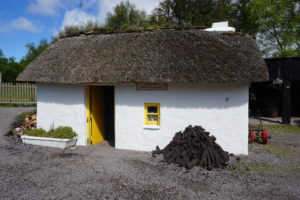
A couple of actual “famine homes” reside in the village, as well. Between the years 1845 and 1852, a destructive famine hit Ireland. Political and economic factors played a huge role, in addition to the potato crop blight. Ireland’s population decreased by up to 25%, as much of its’ citizens fell to illness and starvation or immigrated elsewhere. Food was exported to other countries, despite the fact that Ireland’s own people were starving. Families were evicted from their homes and sent to workhouses.

After an hour’s time in the Bog Village, we proceeded onto our day’s journey through the charming Ring of Kerry lakes, mountains, forests, and villages. Gorse, a beautiful Irish scrub, is found growing across the country.
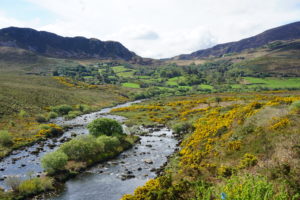
Also along our drive, we spot random Irish castles. Hundreds of these castles are dotted along the Irish countryside.

We arrive at the Lakes of Killarney and admire the breath-taking region, in awe.
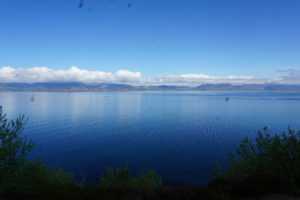

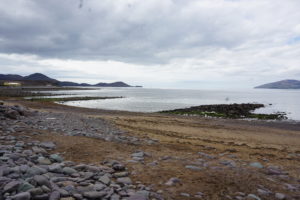
Hundred and hundreds of sheep feed and roam along the countryside and valleys of Ireland. We were quite fortunate, as this was the season for newborn lambs. I was thrilled to encounter many of the babies.
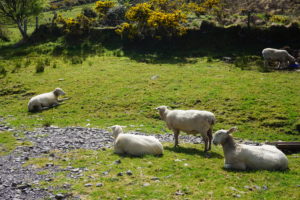
As our tour bus passed through the town of Waterville in county Kerry, the guide pointed out the statue of silent film star Charlie Chaplin, who spent holidays in the area.

The remainder of our day’s drive introduced us to views of the spectacular Macgillicuddy Reeks, the scenic yet winding roads of Moll’s gap, the mighty Carrantuohill (Ireland’s highest mountain), and Ladies View, until our arrival into the Dingle Bay region.
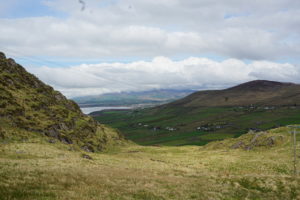

For lunch, our group made a stop at the Scarriff Inn Restaurant (Scarriff Inn Restaurant). Fortunately, their soup of the day was vegan. My veggie soup with flavorful herbs&spices and a vegan bread roll was quite delicious. A glass of iced tea complemented my meal with an incredible waterfront view.
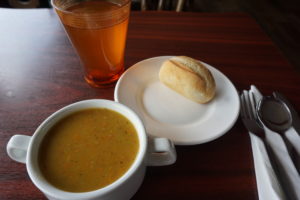

“Fairy Forts” or “Ring Forts” are circular stone structures that were built by pre-Celtic, Druid peoples. They are associated with mythical tales of the fairies. Several are found throughout the country.
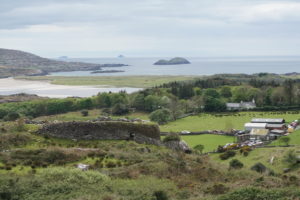
The lakes and beaches along our drive, were simply stunning.
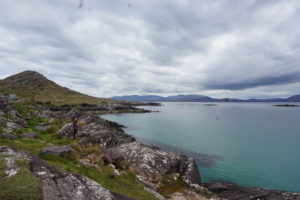
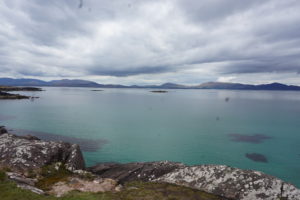
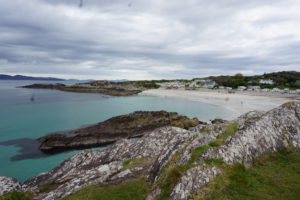
Our afternoon break gave us approximately one hour to shop and snack in the charming town of Sneem, on the Iveragh Peninsula in county Kerry.
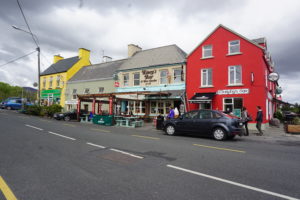
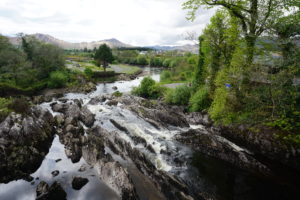

As our journey proceeded towards Killarney, we encountered countless glorious views along the way.
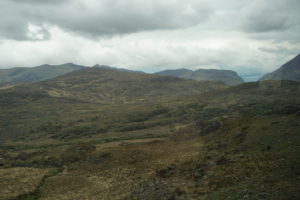
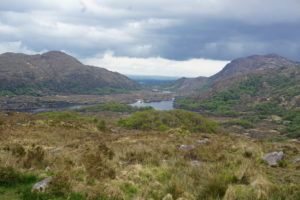
We arrived in Killarney in the early evening. With an hour’s time remaining before our train departure back to Dublin, I found a sandwich shop called “O’Briens”(O’Briens) in the shopping mall adjacent to the train station. They kindly prepared a tasty veggie sandwich in a vegan baguette bread. My snack was a banana.

As the train departed and rolled along towards Dublin, I reminisced about the day’s tour in the strikingly beautiful Ring of Kerry region of southwestern Ireland. My thoughts then turned to eager anticipation for the following day’s adventure in the Giant’s Causeway northern region of the country.
